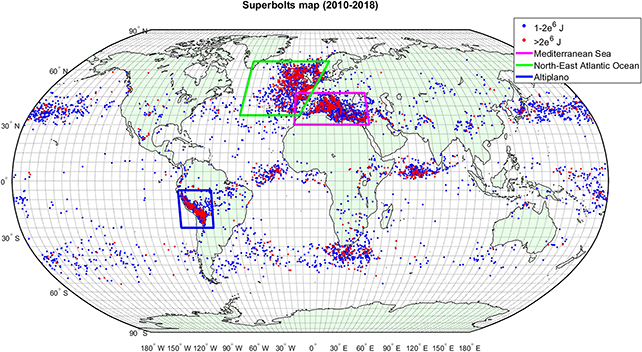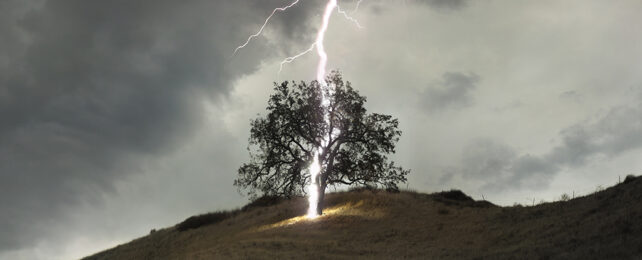Making up less than 1 percent of all lightning strikes, superbolts are as rare as they are powerful. Now a new study has revealed more about why these awesome jolts of voltage can pack as much as a thousand times more energy than regular strikes.
Researchers from the Hebrew University of Jerusalem in Israel and the University of Washington analyzed data from global lightning strikes that happened between 2010 and 2018, through the World Wide Lightning Location Network of radio sensors.
Here's the crucial finding: the closer a storm cloud's electrical charging zone is to the surface of the land or ocean, the more likely superbolts are. That charging zone is the upper area of the cloud where electrification takes place.

The findings align with previous research that identified the Northeast Atlantic Ocean, the Mediterranean Sea, and the Altiplano plateau crossing Peru and Bolivia as places where superbolt lightning was recorded more often. These regions all have short distances between charging zones and their cold ocean or high altitude mountain surfaces.
This is explained by the fact the charging zone generates above the level where air temperature is 0 °C (32 °F). Cold air over the ocean brings the level of 0 °C closer to the surface, and higher altitude mountains force the air to rise, which cools it and brings the level of 0°C closer to the surface.
The thinking is that a shorter distance means less electrical resistance, and therefore a higher current – and more intense bolts of lightning.

"The correlation we saw was very clear and significant, and it was very thrilling to see that it occurs in the three regions," says physicist Avichay Efraim from the Hebrew University of Jerusalem. "This is a major breakthrough for us."
The team mapped a host of data against lightning strength, including land and water surface height, the height of the charging zone, the temperatures at different levels of the cloud formations, and the concentrations of aerosols (tiny particles) in the clouds.
While previous studies have looked at these relationships, no one has put together a global picture like this before. Contradicting earlier research, the team didn't find an association between superbolt lightning and the mix of aerosols such as desert dust.
When one of these superbolts hits, they can cause serious damage to buildings and ships at sea, as you can imagine. These new findings should help by being able to identify where the supercharged lightning is likely to strike.
There's also another issue involved here: climate change. Scientists need to work out if a warming world will mean more or less superbolt lightning, and how changes in temperature and moisture will play out.
More research is going to be required to answer those questions, and the team is keen to keep investigating other factors that might be influencing superbolt formation, including changes in the solar cycle or Earth's magnetic field.
"There is much more unknown, but what we've found out here is a big piece of the puzzle," says Efraim. "And we're not done yet. There's much more to do."
The research has been published in the Journal of Geophysical Research Atmospheres.
